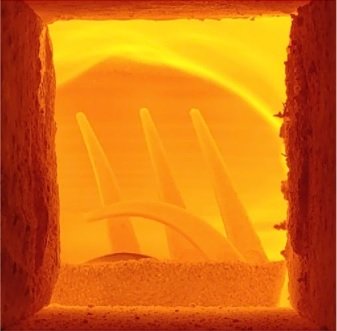FAQ
Is your pottery dishwasher, microwave, oven safe?
Yes, with a few small exceptions. All my Raku fired ware and a select few planters are not dishwasher, microwave and oven safe. Otherwise, all my ware is dishwasher/microwave/oven safe. However, I can not guarantee that some big heavy dish will not fall over and break your little porcelain tea bowl. I recommend that you hand wash your new ware to guarantee nothing happens in the machine. Hand made deserves a hand wash. However, the clay and glazes are strong enough to withstand years of dishwashing. I have been putting some of my personal ware I've made through the dishwasher for over ten years with no signs of aging.
The clay I use is very dense so it shouldn't get too hot during a quick warm up in the microwave. If you boil a cup of water or cook something for an extended period of time it will get hot. Use caution and an oven mitt.
All my functional ware is fired to cone 10 (2350°F) or hotter making it strong enough to withstand your oven. However, I wouldn't recommend baking in your porcelain tea bowl. All my ovenware is made from a special clay body with additives to help it withstand the temperature changes during heating and cooling.
Is your pottery food safe? Your glazes lead free?
Yes, I use all food safe glazes on the eating surfaces of my functional ware. All my glazes are lead free. My Raku fired ware is the one exception and it made for decorative use. (available at my Art fair booth)
What type of clay do you use? Where does it come from?
I use many types of clay to achieve different types of surfaces. Here is a list of the clay bodies I have been using recently.
Amador stoneware manufactured by Laguna clay in California, is my go to clay body for most of my functional ware. It is gritty and red, a real dirt clay. It fires to a rich brown with a nice sandy speckle. It performs fantastic in the wood kiln as well allowing the ash to rest on it giving it that salt and pepper look.
English Grolleg Porcelain manufactured by Standard clay in Pennsylvania, is my standard porcelain body for functional work. It is an extremely fine, white and translucent, when thin, clay that provides a surface to display bright glaze colors. The main ingredient Grolleg kaolin is mined in the south of England and unavailable in the mines of North America. This makes the clay expensive but the Grolleg kaolin is unmatched in its qualities and worth the price.
White Stoneware also from standard is the clay I have been using for my newest reduction fired work. It is a smooth white clay with little grog. It provides a nice blank canvas for me to apply various specialty clay slips to.
Ovenware stoneware was manufactured locally in Elgin, IL by Great Lakes Clay and is my ovenware of choice. It fires to a rich tan color with a nice speckling from the kyanite and grog additives that help with thermal shock.
How hot is your ware fired? How long does it take to fire?
All my functional ware is fired to cone 10 (2350°F) or hotter. The gas reduction kiln take 10 hours to fire and then 24 hours to cool. The wood kiln takes 24 hours or longer to fire. I have participated in firings that take weeks. This allows great amounts of wood ash to collect on the pots and create natural ash glazes on the pots when the ash melts into a glaze at cone 10 and above. The wood kiln then takes several days to cool depending on the size of the kiln.
All this talk about cones..... What is a cone?
We measure the heat work of the kiln using cones. Cones are small, cone shaped, pieces of clay that are formulated to melt when they have heated up to a certain point. If we just used a thermometer to measure the heat of the kiln we would only know the air temperature right around the area of the thermometer. We need to know how hot the clay and glazes are. We need to know if the clay and glaze are reaching the right temperature to vitrify and fuse together to create a strong product. This is why we need cones because they actually measure the heat work the kiln is applying to the ware. Cones of varying numbers are placed through out the kiln and can be viewed through peep holes in the kiln to monitor the progress of the firing.
The view through the peep hole of the cones during a firing.
